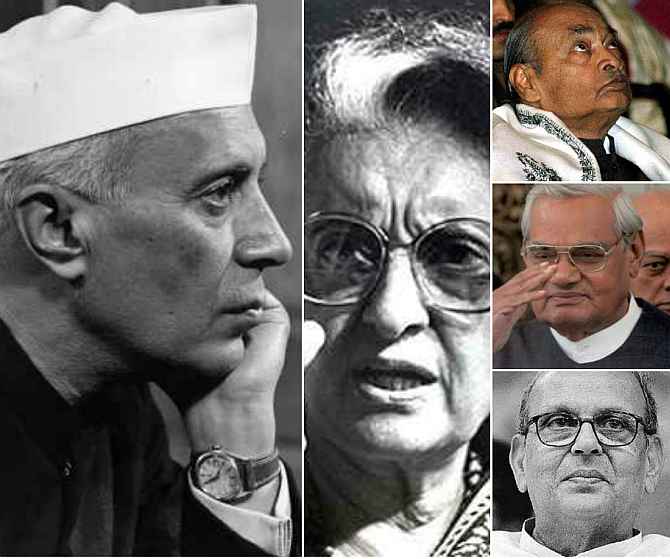
The story of India's prime ministers from 1947, told in photographs.
Narendra Damodardas Modi is all set to be sworn in as India's prime minister on May 26.
Since India attained Independence in 1947, there have been 13 full-time prime ministers, apart from Gulzarilal Nanda who was twice interim prime minister.
Some rare photographs from the life and times of our prime ministers.
Please sit back and enjoy the ride down memory lane.
Kindly ...
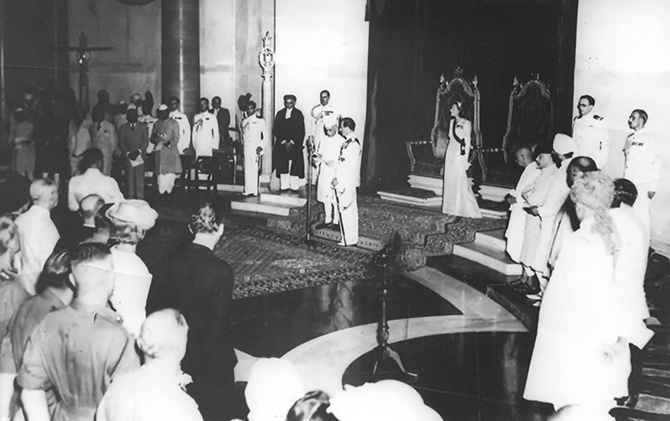
On August 15, 1947 as India attained Independence, Jawaharlal Nehru was sworn in as the first prime minister of the free nation. His oath of office was administered by Lord Louis Mountbatten, the last Viceroy of India.
Nehru, considered the architect of modern India, served as prime minister till his death 50 years ago on May 27, 1964, spearheading the Congress party's victory in the first three Lok Sabha elections of 1952, 1957 and 1962.
His 16 years and 286 days-long term in office makes him the longest-serving prime minister till date.
Kindly ...
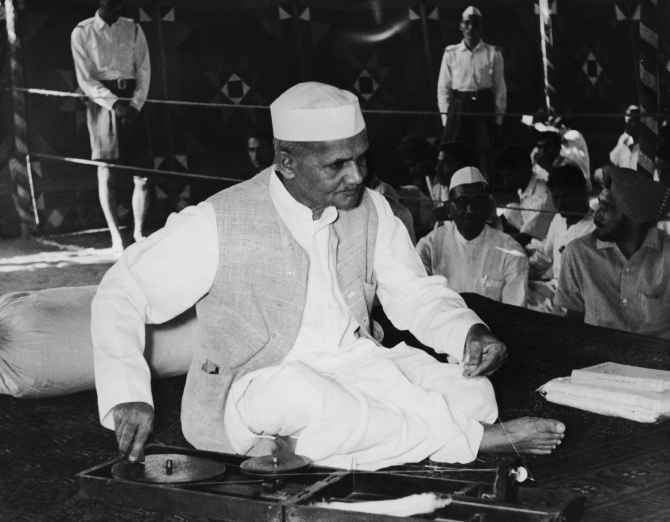
The huge void created after Nehru's death was filled when Lal Bahadur Shastri -- the diminutive politician from Uttar Pradesh who held portfolios like home and railways in Nehru's Cabinet -- took over as India's second prime minister on June 9, 1964.
Shastri's tenure was cut short by his untimely death on January 11, 1966, in Tashkent, in the then Soviet Union. He had served as prime minister for a mere 19 months.
Kindly ...

Jawaharlal Nehru's only child, Indira Gandhi, took over as India's third prime minister on January 24, 1966, following Shastri's death and remained in office till March 24, 1977, when public ire against the Emergency saw her swept out of power.
During her first term in office she broke with the old guard in the Congress that cossetted her into power in the belief that she would be a pliable leader ('goongi gudiya (dumb doll)' was the term they used for her) discovering to their utter shock that the lady packed a spine of steel.
She won the 1967 election (the first general election where the Congress did badly), the 1971 election (the Congress won 350 seats) and the 1980 election where she returned to power after three years out of office.
Opinion is sharply divided over her legacy. While her supporters regard Indira Gandhi as a strong leader who ushered in lasting changes, her critics believe she misused her power, especially when she imposed the infamous Emergency from June 1975 to March 1977 during which she ruled by decree.
Kindly ...
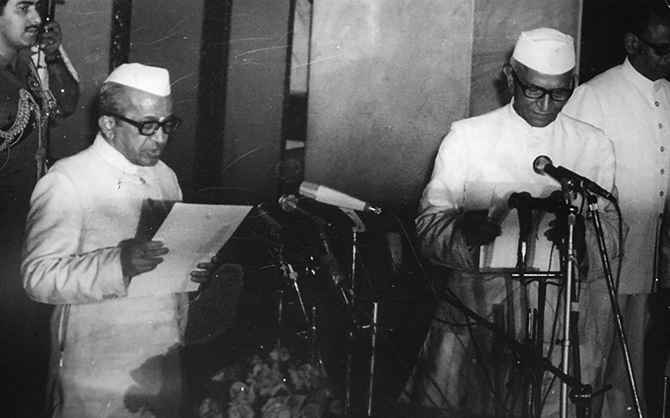
The Congress veteran -- he was finance minister under Indira Gandhi -- was, ironically, India's first non-Congress prime minister.
Desai, who stayed on with the original Congress when Indira Gandhi split the party, and which was resounding rejected by the electorate in the 1971 general election, led the Janata Party to a landslide victory in the 1977 election under Jayaprakash Narayan's guidance.
Desai, then 81, was sworn in as the fourth prime minister on March 24, 1977.
Just two years and 126 days later, Desai was forced to resign on July 28, 1979, paving the way for former deputy prime minister, Charan Singh, to succeed him.
Kindly ...
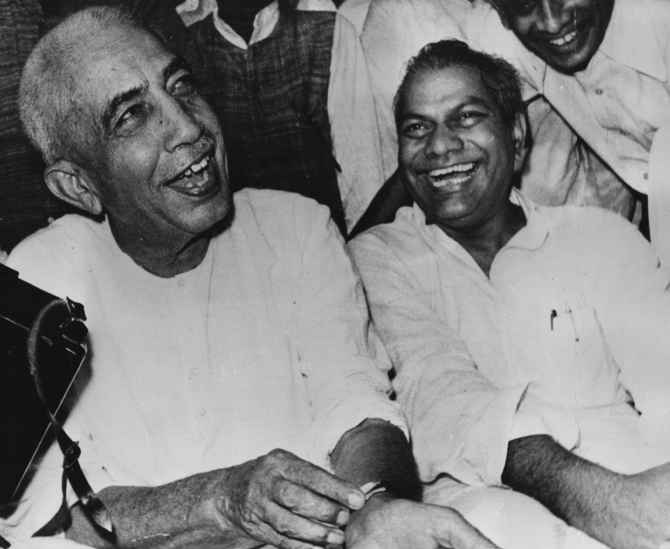
Choudhary Charan Singh, deputy prime minister in the Morarji Desai Cabinet, took over as the fifth prime minister on July 28, 1979.
His stint was short lived and he resigned following the Indira Gandhi-led Congress's withdrawal of support to his government.
Charan Singh is the only prime minister who did not face the Lok Sabha even for a day during his short tenure.
Kindly ...

The Congress-I (for Indira) led by Indira Gandhi made a big comeback in the 1980 general election.
Uneasy with the unstable Janata Party governments, voters gave the Congress 353 Lok Sabha seats.
Indira Gandhi began her second stint as prime minister on January 14, 1980. Six months later, her never-say-die spirit seem to go out after her younger son and political counsellor Sanjay Gandhi died in an air crash.
Her government was beset by an insurgency in Punjab and unrest in Assam. To quell the Khalistani rebellion mounted from the Golden Temple, she ordered the Indian Army into Sikhism's holiest shrine. Operation Blue Star cleared the Golden Temple of the rebels, but came at high cost -- innocent pilgrims and soldiers were killed, both the Akal Takht and the Harmandir Saheb were badly damaged.
Indira Gandhi paid the highest price for her decision. Refusing to remove her Sikh bodyguards, she was assassinated on October 31, 1984, by Beant Singh and Satwant Singh, in revenge for Operation Blue Star.
Kindly ...

Indira Gandhi's elder son Rajiv Gandhi, who was just 40 years old then, took over as India's sixth prime minister hours after his mother's assassination.
In the election that followed, the Congress party won 414 Lok Sabha seats, a majority that was denied even to his grandfather Jawaharlal Nehru.
Rajiv began well, promising to clean up the system, condemning power-brokers in the Congress at the party's centenary celebrations in Mumbai. He is credited with ushering in the computer era in the country, and for his 21st century vision.
Initially acclaimed as Mr Clean, his government was accused of involvement in the notorious Bofors kickbacks scandal where Rs 640 million was paid as bribes to approve the Swedish howitzer for the Indian Army. Worse, politically insecure, he caved in to orthodox elements in both the Hindu and Muslim communities.
His finance minister V P Singh resigned from the Union Cabinet and challenged him. Rajiv Gandhi lost the 1989 general election (though the Congress remained the single largest party in the Lok Sabha). Two years later, when he was on the comeback trail, he was assassinated by the Tamil Tigers in Tamil Nadu.
Kindly ...

Vishwanath Pratap Singh's National Front formed the government after the 1989 election, with external support from both the Bharatiya Janata Party and Left parties, a balancing act if ever there was one.
After V P Singh implemented the Mandal Commission's recommendations for more reservations for the Other Backward Classes in educational institutions and the government jobs, BJP leader Lal Kishenchand Advani -- worried that Singh's decision would cause a loss of support for his party -- embarked on a Rath Yatra to Ayodhya, site of the disputed Ram Janambhoomi-Babri Masjid.
When he was arrested by the Janata Dal's chief minister in Bihar, Lalu Prasad Yadav, in Samastipur in October 1990, the BJP promptly withdrew support, causing the collapse of the V P Singh government.
Kindly ...
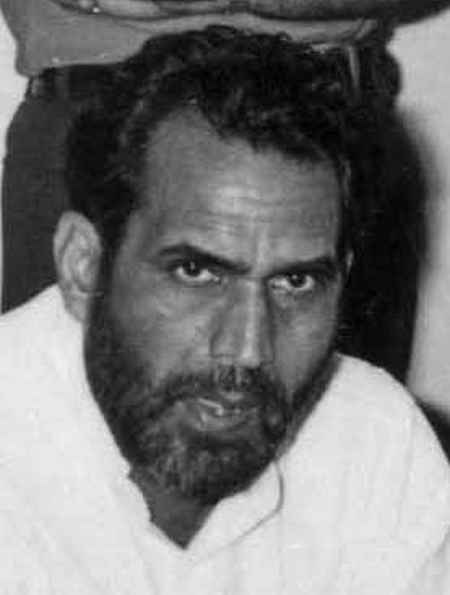
Chandra Shekhar, the Young Turk of the Congress party in the late 1960s and early 1970s, fell out with Indira Gandhi shortly before the Emergency. After she was voted out of power in March 1977, Chandra Shekhar was appointed president of the Janata Party.
When the Janata Party evolved into the Janata Dal, Chandra Shekhar and V P Singh, by then the party's talisman, disagreed on virtually everything.
When the V P Singh government fell, Chandra Shekhar broke away with 64 MPs and formed the Samajwadi Janata Party, and was sworn in as India's eighth prime minister on November 10, 1990. The Congress supported the Chandra Shekhar government from outside.
Chandra Shekhar lasted a little longer than Charan Singh -- he resigned after the Congress withdrew support, alleging that his government was spying on Rajiv Gandhi.
Kindly ...
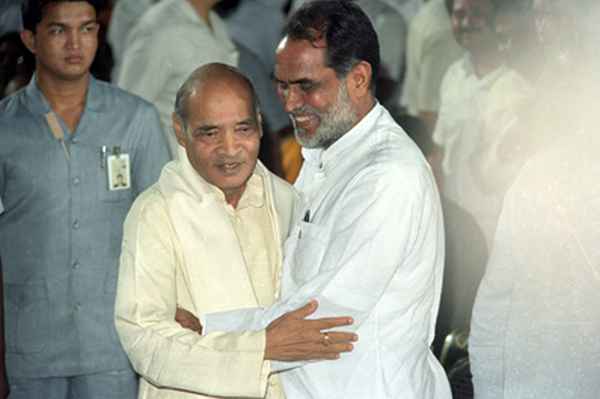
The Congress formed a minority government with the support of the Left parties after the 1991 general election which was largely fought against the background of the Mandal Commission fallout and the Ram Janambhoomi-Babri Masjid issue.
Led by P V Narasimha Rai, it remains the only minority government to complete a full term in office, largely due to the uncertainties surrounding India then and no one willing to broil the situation further by engineering political uncertainty.
Former prime minister Rajiv Gandhi was assassinated after the first phase of polling at Sriperumbudur in Tamil Nadu, and the Congress swept the constituencies that went to the polls in the remaining phases.
Rao was sworn in as India's ninth prime minister on June 21, 1991, and is responsible for ushering in economic liberalisation in the country.
Kindly ...

After the 1996 general election resulted in a hung Parliament, the country witnessed three prime ministers in two years and forced the country back to the hustings in 1998.
BJP leader Atal Bihari Vajpayee was sworn in as the country's tenth prime minister on May 16, 1996 after his party emerged as the single largest party in the Lok Sabha.
Vajpayee resigned after 13 days in office when he realised that the BJP would not muster enough support to obtain a majority.
Kindly ...
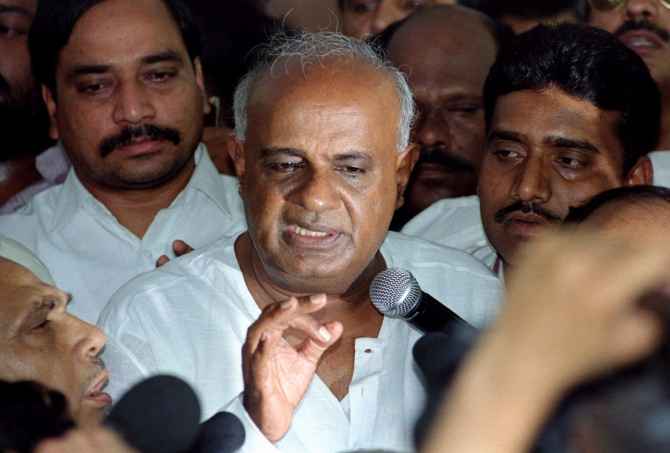
Karnataka Chief Minister H D Deve Gowda was unexpectedly chosen by the non-Congress, non-BJP regional parties to lead the United Front government after the Vajpayee government fell.
Deve Gowda was sworn in as India's 11th prime minister on June 1, 1996, and remained in office till April 21, 1997, when the Sitaram Kesri-led Congress sought a change of guard for reasons that are still not very clear.
Kindly ...
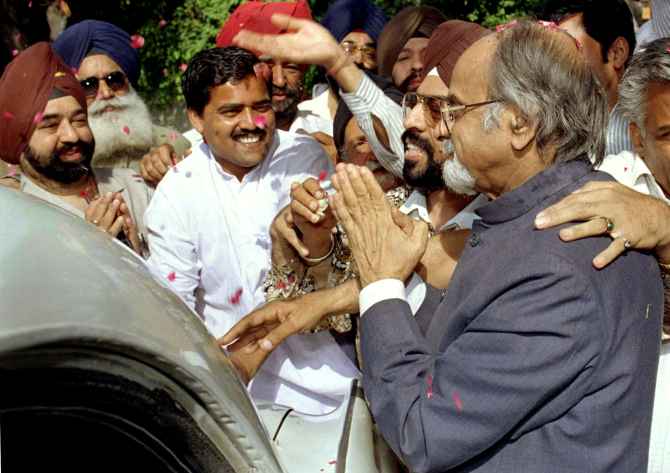
Following H D Deve Gowda's resignation, then external affairs minister Inder Kumar Gujral emerged as the consensus candidate to lead the United Front government.
He was sworn in as the 12th prime minister on April 21, 1997 and resigned on November 28, 1997 after the Congress withdrew support over the Jain Commission issue.
Kindly ...
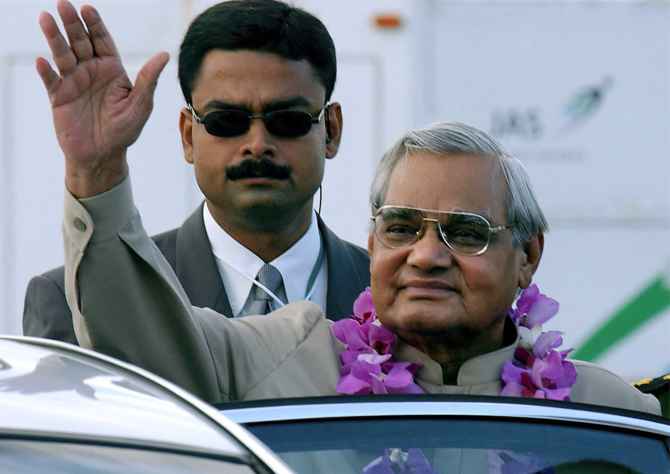
After the two United Front governments between 1996 and 1998 fell, fresh elections were held in 1998 in which the BJP came ahead of the others although it was well short of a majority.
Still, after two years of political instability and experimentation, and with the Congress unwilling to seek allies, the BJP-led National Democratic Alliance formed the government after regional parties gathered under its banner to provide a stable government.
Within weeks of coming to power Vajpayee decided to take the country on the nuclear path, for which international condemnation quickly followed.
The government, shaky to begin with, saw an irrepressible ally in Jayalalithaa's All India Anna Dravida Munnetra Kazagham which decided to withdraw support to the NDA after a famous tea party she had with Congress President Sonia Gandhi.
In the trust vote that ensued in Parliament, the Vajpayee government lost by a single vote.
If in its first avatar it lasted 13 days, its second stint in power lasted 13 months.
Elections were held again in 1999 where the BJP-led NDA won 303 seats. The BJP remained the single largest party.
Vajpayee was sworn in as the prime minister for the third time on October 13, 1999 and led a stable government for the next five years.
Kindly ...
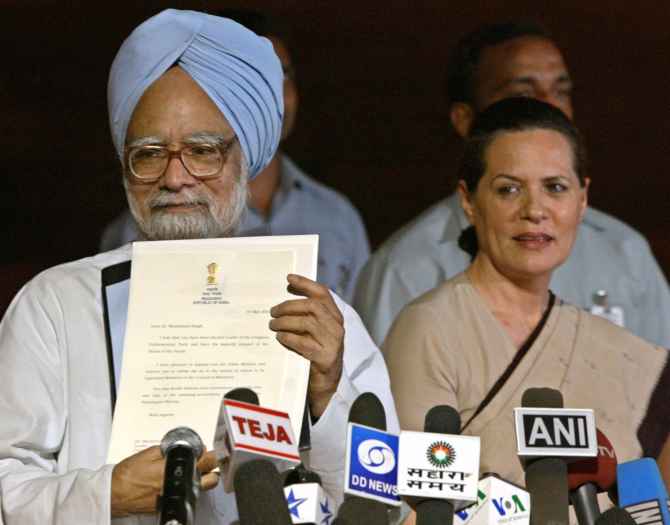
The Congress staged a comeback in the 2004 general election and emerged as the single largest party, ahead of the certain-to-win BJP, and was quickly assured of outside support by the Bahujan Samaj Party, Samajwadi Party and the Left parties (the Communists had their best performance ever in this election).
Congress President Sonia Gandhi declined the prime minister's post and instead chose former finance minister Manmohan Singh, who was sworn in as the 13th prime minister on May 22, 2004.
Given his image as a 'reformer', no one expected the arrangement to continue given the government's dependence on the Left, but the break came over the India-US nuclear deal to which the Left was bitterly opposed.
The United Progressive Alliance government survived the trust vote on July 22, 2008, following the break with the Left, thanks to some nimble political manouevres.
The Manmohan Singh-led UPA won the 2009 general election as the alliance posted a comfortable majority of 322 seats.
Kindly ...
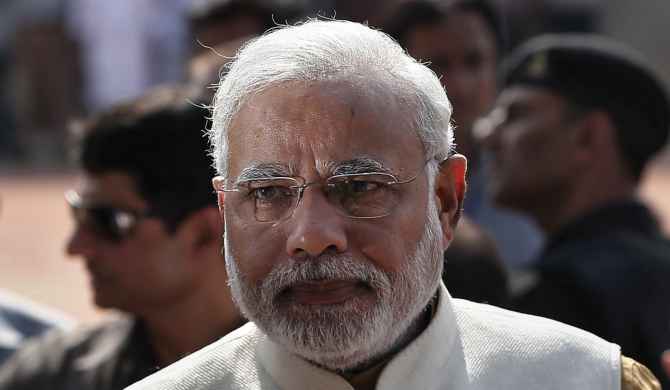
The BJP-led NDA won 336 seats in the 2014 general election, and Narendra Modi is all set to be sworn in as India's 14th prime minister on May 26.
Given that the BJP secured a majority of its own -- the first time any party since 1984 has done so -- the Modi government is expected to handle crucial policy decisions without any danger to its existence.